What is dysplasia in dogs?
16th June, 2020
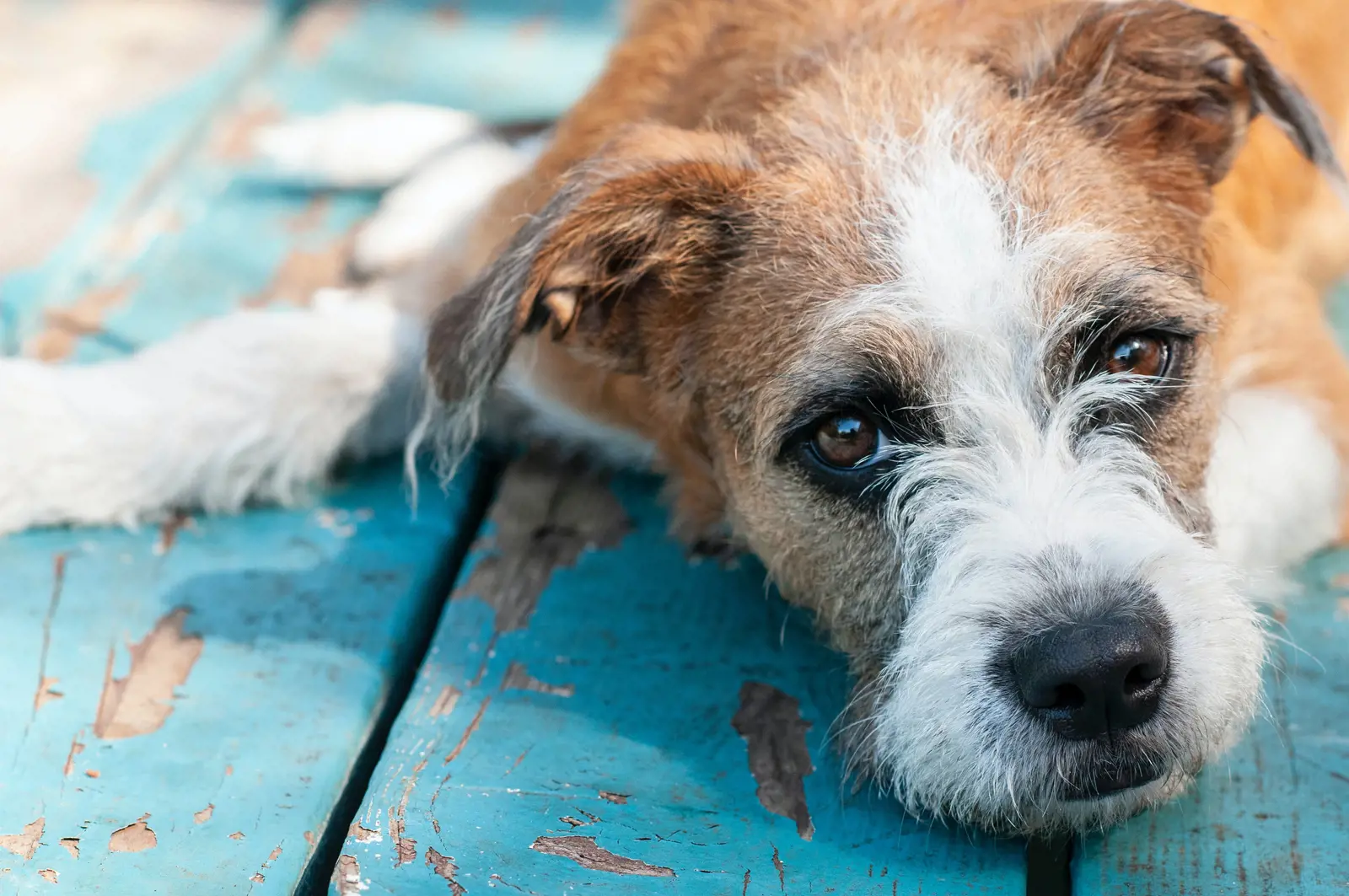
If your puppy is limping, stiff or seems less than its usual bouncy self, you’d be right to be concerned. These worrying signs might indicate a problem – and it could be hip or elbow dysplasia, in which a pup’s joints develop with abnormalities, leading to stiffness and pain.
So what symptoms suggest your pooch is affected by this lifelong condition, and what action should you take?
Remember – the cost of caring for a canine with a chronic condition can be high. Dog insurance taken out before it develops symptoms could help you keep your pooches vet fees covered throughout its lifetime.
What is hip dysplasia in dogs?
Dysplasia is a genetic orthopaedic condition in which a dog’s hip joints fail to develop correctly, so the ball of the thigh bone rubs against the socket instead of gliding smoothly.
Over time, this abnormality means that the joint becomes worn and damaged, causing swelling and pain and eventually leading to osteoarthritis. It can occur in one or both hips.
While dogs inherit the genes that can cause dysplasia, there are also environmental factors that influence whether or not it will develop the condition, and how severely it will be affected.
These include exercise and diet in its early life.
Dysplasia is a degenerative condition. Left untreated, it will cause your pet pain and potentially lead to osteoarthritis and lameness.
What about elbow dysplasia?
While the term ‘dysplasia’ usually refers to a condition of the hip, it’s sometimes used to describe problems with the elbow joints instead.
Hip and elbow dysplasia are very similar. They’re both inherited abnormalities of the joint, and require pretty much the same management.
However, the elbow joint comprises three rather than two bones, and there are several different ways in which these can develop abnormally and cause problems for your pet.
So some vets think that elbow dysplasia is more of an umbrella term than an accurate diagnosis – but much of the advice given for hip dysplasia will apply.
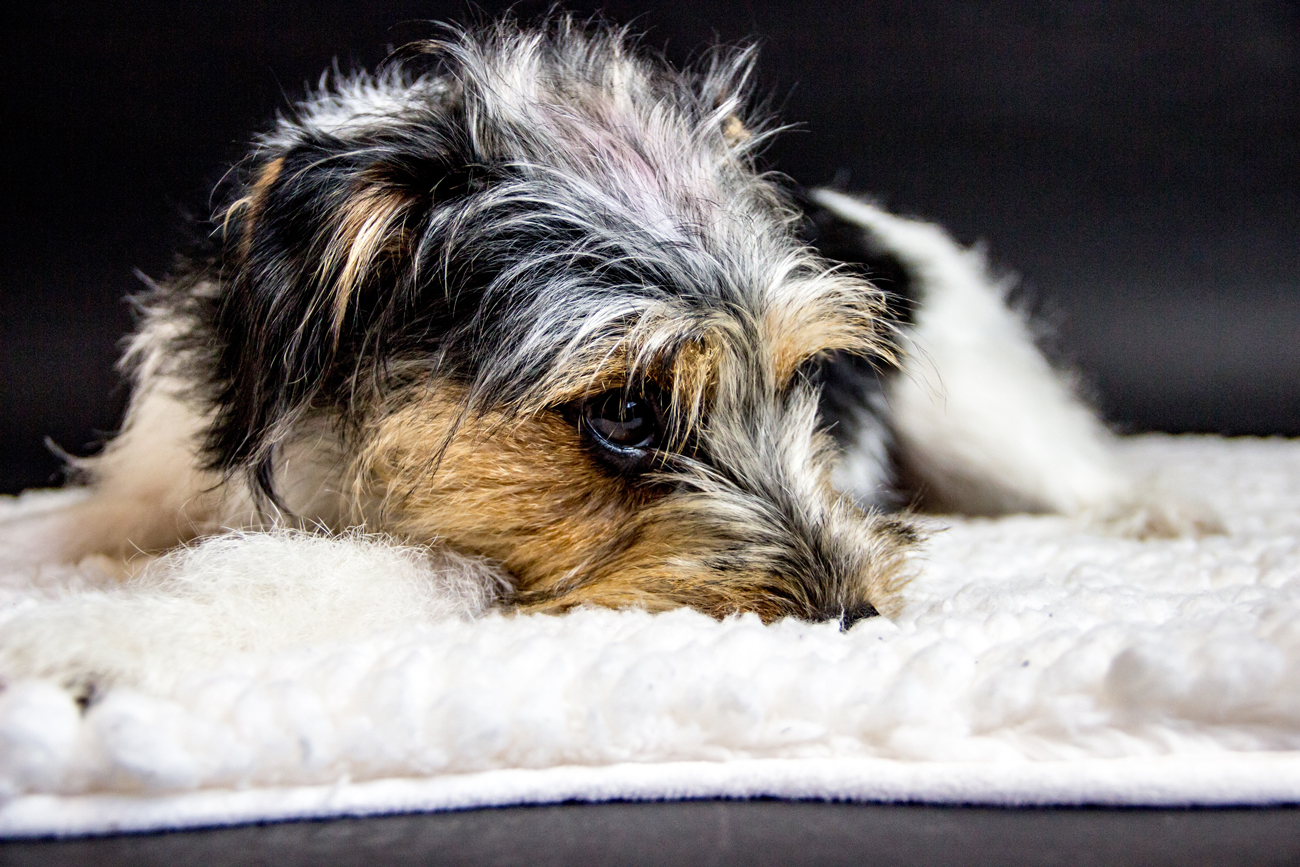
Screening for dysplasia
Dysplasia is usually inherited from one or both parents, so reputable breeders will not breed from animals with the condition.
The Kennel Club and British Veterinary Association run a dysplasia scheme to screen dogs, so if you’re thinking of buying a pup, ask your breeder for the hip and elbow scores of its parents and any other pups they’ve produced.
The lower the score, the better.
How can I tell if my dog might have hip dysplasia?
Dysplasia usually appears when your puppy is between a few months and one year old.
Sometimes, mild cases do not become noticeable until the dog is older and has developed arthritis.
You might spot that your young dog is stiff, has difficulty getting up or lying down, or is limping on one or two legs.
Its rear muscles may seem less well developed in comparison to the rest of its body, giving it a skinny-hipped appearance, and it may stand in such a way that its weight is on its front legs.
It may be reluctant to go for a walk or to play, seem unsteady on its feet, or keep its rear legs close together.
When running, it might move its back legs together in a bunny hop, and it could have difficulty going up and down stairs
When you’re bathing, stroking or grooming your dog, it may try to prevent you going near its hip.
Your pooch may also display obvious signs of discomfort or pain: groaning when it gets up, or whimpering and crying while putting weight on the affected limbs.
Remember: pooches try to hide their pain.
If you suspect something’s wrong, don’t be fooled by your dog’s stoicism: keep an eye on it, and take it to the vet if its condition doesn’t quickly improve. Insurance for your dog could help you cover the costs of vets’ fees.
What are the symptoms of elbow dysplasia?
Many of the above symptoms can apply to elbow dysplasia, too – and in fact, the two conditions can be misdiagnosed.
However, you may also notice your dog pointing its paws outwards, or holding its front legs at strange angles. As the condition progresses, your pooch’s elbows might look swollen.
The condition usually affects both elbows. This can make it harder to spot, as your dog will not develop a tell-tale limp on one side but will instead just walk stiffly or slowly.
If your puppy is reluctant to move at all, that’s a sure sign that something’s wrong. Seek veterinary advice promptly.
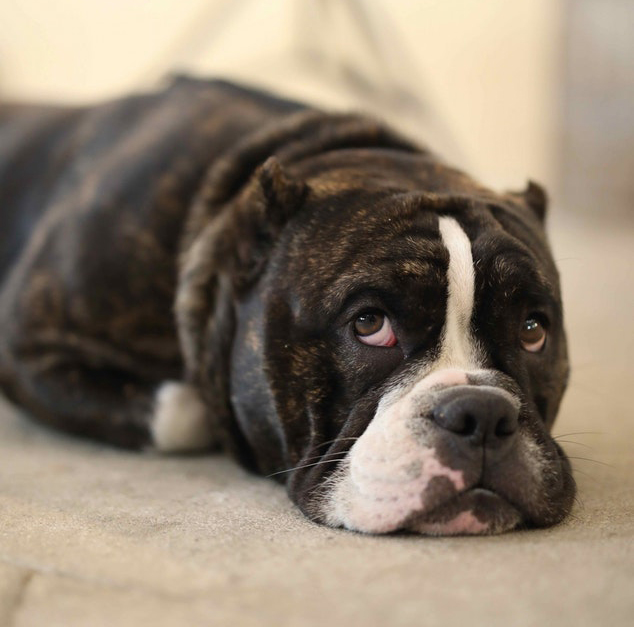
How can dysplasia be prevented?
Dysplasia is a genetic condition, so it’s hard to prevent it developing. However, environmental factors play a part, too, and you do have some influence over these.
Above all, don’t let your dog become overweight. Excess weight puts a strain on your dog’s joints, which will exacerbate the problem.
Dysplasia can also develop if your pup grows too fast, as is frequently the case for giant breeds such as Newfoundlands. Buy specially formulated food to help your pup grow steadily, allowing its joints to develop properly.
Feed your pup the right food in the right quantity for its breed, age and size. That gives them the best start in life, helping to avoid problems later on.
Exercise your puppy correctly – you need to keep it fit, but don’t over-exercise it while it’s still developing.
Avoid tiring it out while it’s young: don’t take it running with you, for example, as you need to keep to your puppy’s pace, not the other way around.
Give it frequent rests, and avoid exercising it with adult dogs if possible as it may try, in vain, to keep up!
It’s always wise to have a good chat with your vet when you buy or adopt a new puppy. That way, you’ll get all the tips you need to help your pup grow into a healthy adult.
Quality dog insurance may help you cover the fees, and Purely Pets also offers a 24-hour Vet Helpline for all your queries.
Which breeds are most at risk?
All breeds can develop dysplasia. However, it’s most commonly found in medium to large breeds and pedigrees.
There are a few breeds that are particularly associated with the condition.
These include: Labradors, Golden Retrievers, German Shepherds, Rottweilers, Boxers, Newfoundlands, Great Danes, St Bernards, and Bernese Mountain Dogs.
A couple of smaller breeds are also prone to dysplasia, such as Pugs and French Bulldogs.
So if you are thinking of buying one of these, take particular care – especially while they’re still growing.
Buy lifetime dog insurance as soon as you get your pet, so you’re covered for vets’ fees if it later develops hip or elbow dysplasia or any other medical condition.
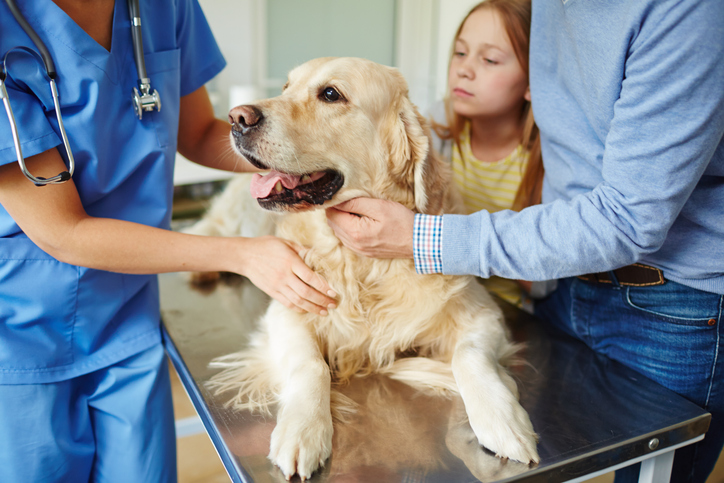
How is dysplasia diagnosed?
Don’t delay heading to your vet if you have concerns about your puppy.
Early diagnosis allows you to start taking action to slow the progression of the condition, treat any pain, and keep your pup in the best possible health.
Your vet will listen to your description of its symptoms and carry out a physical examination, palpating the hips or elbows to check for instability, stiffness or pain.
They may observe your dog while it walks or stands. Your vet may also take blood samples, as signs of inflammation can show up in blood.
If your vet suspects dysplasia, he or she will take X-rays of the affected area to give a definitive diagnosis and determine the severity of the condition. Your dog will require a general anaesthetic for this to be carried out.
How can dysplasia be treated?
While there’s no cure for dysplasia, there are several treatments available, depending on how badly your pup is affected.
Your vet will prescribe anti-inflammatory medication (NSAIDS) to bring down the swelling in the joint and reduce the pain.
You’ll also get advice on helping your dog lose weight, if necessary, to reduce pressure on the joint.
This will include help in devising a suitable exercise regime for your pet which keeps it trim without placing excess strain on its affected legs.
Joint supplements, probably containing Glucosamine, are another way you might be able to protect your pooch’s joints.
These are available cheaply in tablet or liquid form. Their efficacy is disputed, but lots of owners say they have noticed a difference in their pets after giving them supplements.
Hydrotherapy and physiotherapy
Hydrotherapy and physiotherapy are also frequently recommended by vets to keep your pooch in the very best condition.
Hydrotherapy allows your dog to exercise in warm water, which alleviates pain and reduces pressure.
Your vet will be able to recommend canine hydrotherapy centres, where trained therapists will help you devise a great low-impact exercise regime for your animal.
Physiotherapy will support your dog in building up muscles without straining its joints.
This is particularly useful if your dog is recovering from surgery, as it will help to restore flexibility and movement without causing further damage.
In most dogs, conservative measures such as diet, exercise and physiotherapy will be enough for you to manage your dog’s condition.
However, if your dog’s suffering from severe stiffness or pain, your vet may recommend surgery.

Surgery for dogs with hip dysplasia
If your dog is badly affected, then your vet may recommend an operation to ease the pressure on one or both joints and restore some movement.
These operations will be carried out by specialist surgeons at veterinary hospitals.
Reconstructive surgery may be possible to make the hip joint more stable.
The operation involves cutting the pelvis, rotating the cup over the ball of the bone, and securing it into its new position with a bone plate and screws.
This type of surgery retains your dog’s own joint tissues, and may limit the development of osteoarthritis.
Your dog may also require a total hip replacement, removing the painful joint and inserting plastic and metal parts in its place.
Other procedures may also be possible – your veterinary surgeon will examine your animal carefully, and advise on what’s the best option in your pet’s case.
Surgery for dogs with elbow dysplasia
For dogs with affected elbows, the type of operation required will depend on the specific form of abnormality.
Some dogs can benefit from surgery to remove fragments of cartilage or bone. Others may require more radical surgery, such as the resurfacing of the joint.
Total elbow replacements are a last resort, and are rarely carried out.
Surgery is always an expensive option. Specialist dog insurance could help you cover the fees for operations, as well as any subsequent recovery and treatment, so make sure you take it out before your animal develops symptoms.
How can I care for my dog with dysplasia?
Your dog’s going to need ongoing care for the rest of its life to keep its condition under control. In most cases, you should be able to manage the condition through exercise, diet and NSAIDs.
Your pet pooch is likely to develop arthritis as it gets older, so you’ll need to follow your vet’s advice and get further treatment at that stage.
By taking special care when your puppy’s young, though, you may well be able to delay the onset of arthritis and give your pet many years of pain-free life.
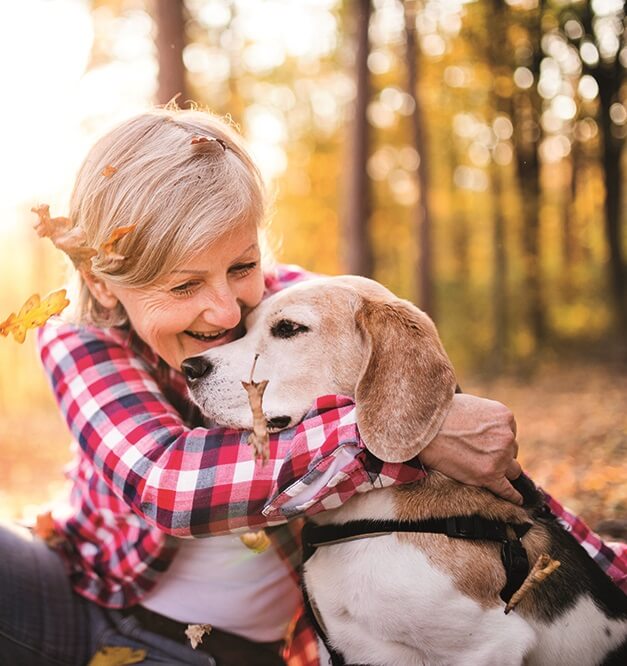
Get a quote from Purely Pets
If your pooch develops dysplasia, you’ll want to give it the very best veterinary care – but that won’t be cheap.
Fortunately, if you’ve taken out dog insurance from Purely Pets before the condition develops, you’ll get cover for vets’ fees from £1,000 to £15,000 per year, depending on the cover level you’ve chosen.
We’ve got 15 cover levels for you, depending on your budget and your pup’s needs. Excess levels start from just £60.
Special diets and complementary treatments are also included in all policies, giving you a wide choice of options for managing your pet’s condition.
We also offer a 24-hour Vet Helpline, so you can get advice, reassurance, or answers for your canine queries at any time.
Contact Purely Pets for a quote today to give your pooch protection throughout its lifetime.
Helpful Pages
Recent Posts
Pet Insurance Quote
- 98% claims paid *
- Claims paid directly to vets
- 24/7 vet video consultations
- Interest free monthly payments




